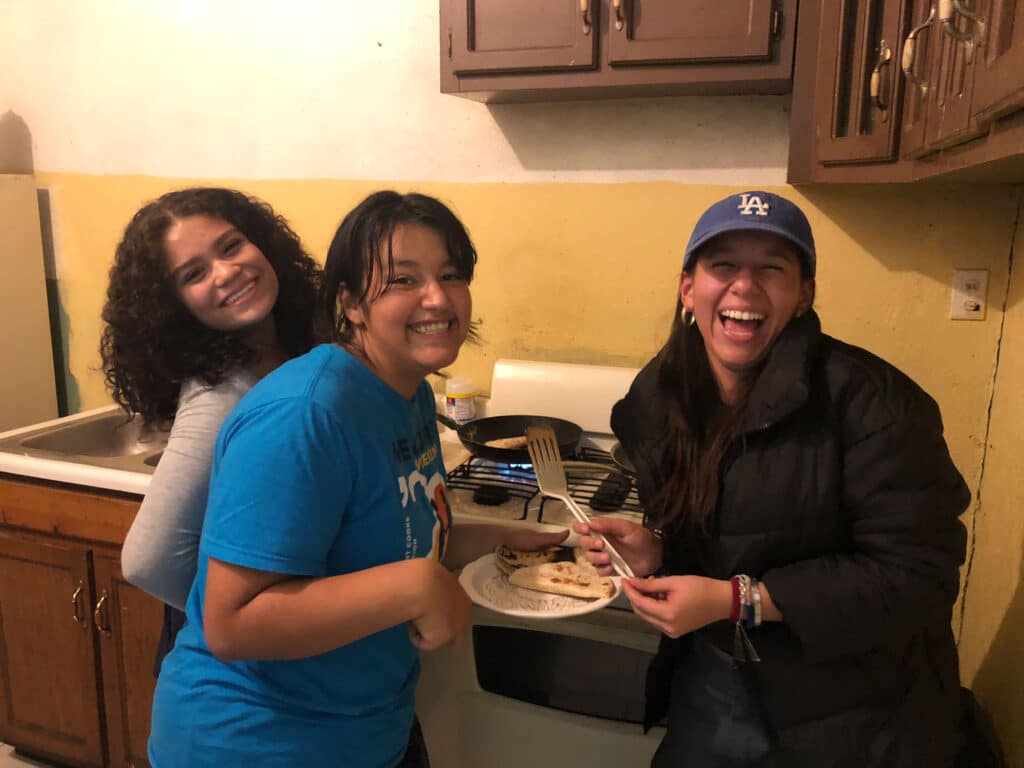Los Niños Service-Learning Trip
I had the opportunity to participate in the Los Niños trip during my junior year as a language translator, and this year, I served as a translator and the senior trip leader. From the very beginning, I felt empowered given that I was attending the first-ever trip with an all-female faculty. During our initial pre-departure meetings, there was an emphasis on the idea that we would approach this trip as a learning experience rather than a service-oriented endeavor, which contributed to the mindset everyone had going into it. We drove for a total of six hours before arriving in the city of Calexico, where we would be crossing the border to Mexicali. We were greeted with a warm welcome by the Los Niños director, Alonso, who served as our go-to person the whole trip. I was shocked by how simple crossing the border into Mexico was, we weren’t even asked for any identification. As soon as we crossed the border, we were given a glimpse into the Mexican culture with the many street vendors and tienditas that surrounded us. We arrived at the Los Niños house and were welcomed by Tita, who had prepared us a delicious dinner. After indulging in delectable quesadillas, we were given a presentation by Alonso and Tita who explained to us what the program would look like.
On Friday and Saturday, we worked on projects at two different schools. At the first school, we worked on a cement project. We split up into three groups, and each made two rounds of cement. The process required us to communicate and work effectively as a team. The cement we made was used to make a large pavement area that would be used as a rest/play area. At the second school, we worked on a similar cement project and also painted a playground set with bright colors to bring it more life. Seeing the expressions of gratitude that the directors of the schools showed after seeing our finished work was truly impactful and fulfilling. In the U.S. many of us are conditioned to believe that people in other countries, specifically Latin American countries, are unhappy in their homeland and wish to chase the American dream. However, the interactions we had at the schools dismantled that ideal and showed us that people thrive despite what we think in the U.S., which served as a big takeaway for a lot of us on the trip.
On Friday we visited El Albergue del Desierto, which is a women’s migrant shelter established by Monica Oropeza. Before we got the chance to talk with Monica, we played a few games and invited the children in the shelter to play with us. The room gleamed with smiles from everyone. We then transitioned into another room where Monica informed us about the immigration process and what the shelter does to help migrants in need. After the information session, we met a migrant woman named Santa who shared her life story with us. The moment was definitely one of the most impactful for everyone in the room. We learned so much and left the shelter with an immense amount of empathy.
The most memorable parts of the trips were the interactions I had with all the people we met. I come from an immigrant Salvadoran family whose background is similar to that of the people we met during the trip. Because of this, the connections I made with them felt very intimate and genuine. Talking to Alonso, Tita, and Doña Porfiria, an 84-year-old woman from the community of La Ladrillera, felt as though I was talking to family. I am forever grateful for the experiences I had on the Los Niños trip, and I encourage every Cate student to go on the trip at least once during their time at Cate. Los Niños is engraved in my heart forever.







